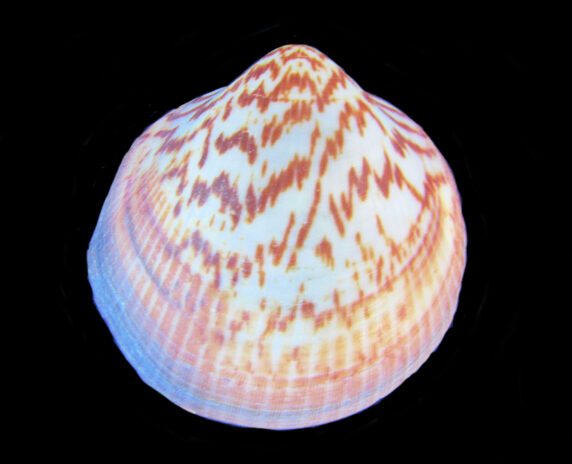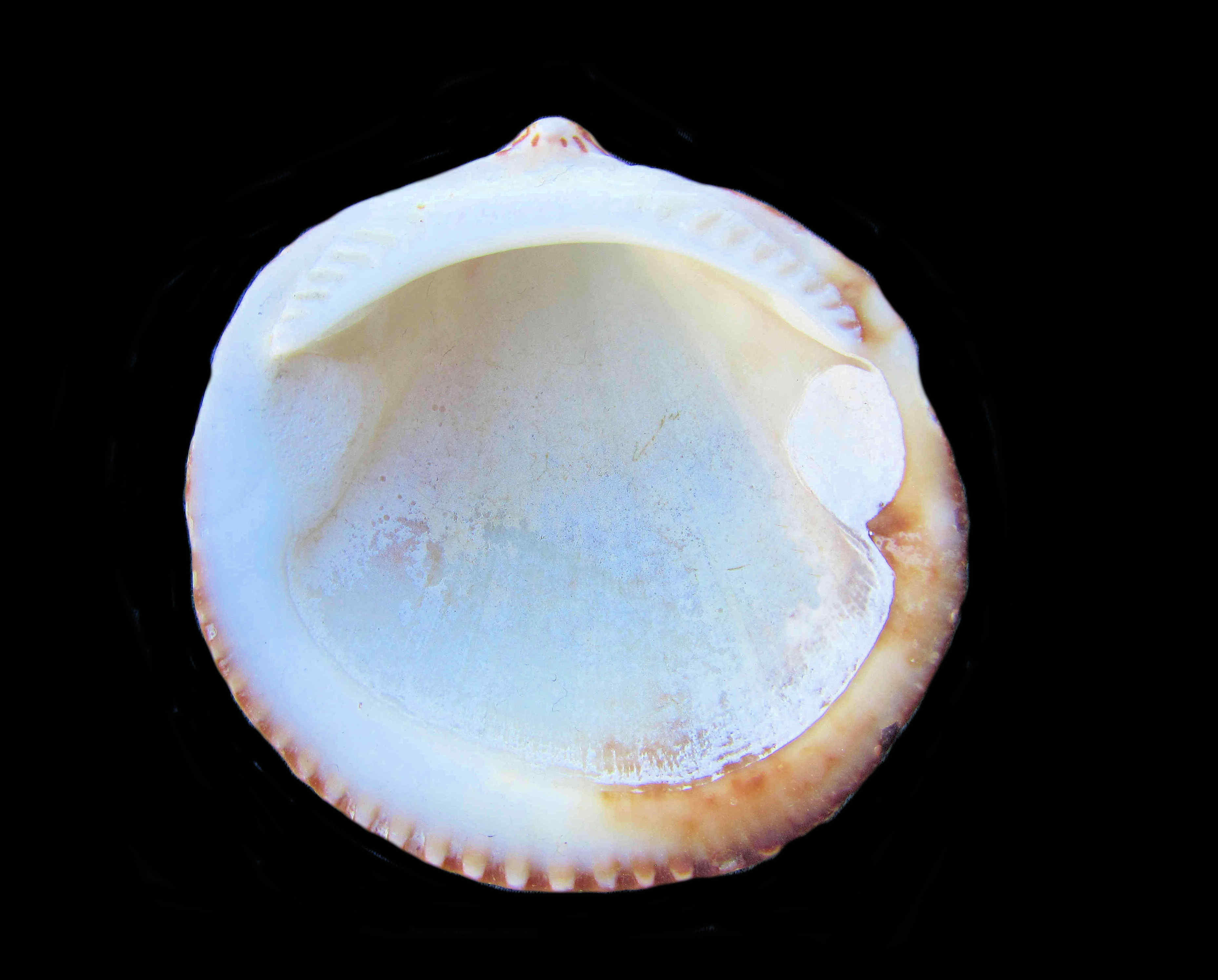Giant Bittersweet Shell, Glycimeris gigantea

 Giant Bittersweet Shell, Glycimeris gigantea. Size: 10.0 cm (3.9 inches) x 10.0 cm (3.9 inches). Shell collected from the beach of Bahía Concepción, Baja California Sur, April 2005. Shell collection, photograph and identification courtesy of Bob Hillis, Ivins, Utah.
Giant Bittersweet Shell, Glycimeris gigantea. Size: 10.0 cm (3.9 inches) x 10.0 cm (3.9 inches). Shell collected from the beach of Bahía Concepción, Baja California Sur, April 2005. Shell collection, photograph and identification courtesy of Bob Hillis, Ivins, Utah.
The Giant Bittersweet, Glycimeris gigantea (Reeve, 1843), is a bivalve mollusk that is member of the Glycimeridae Family of Bittersweets, that is known in Mexico as almeja de arca and almendra India. It is the largest bittersweet found in Baja waters. The shell is solid with a nearly round profile with a slightly flattened dorsal margin and a fairly high beak. The surface of the Giant Bittersweet shell is smoother than other bittersweets found in the area, with fine, radiating lines. They are white with reddish brown mottling. The Giant Bittersweet Shell reach a maximum of 10.5 cm (4.1 inches) in length and 10.5 cm (4.1 inches) in height.
Giant Bittersweets are found over and within sand and mud bottoms in the intertidal zone to depths up to 60 m (200 feet). They range from Magdalena Bay, Baja California Sur, to Acapulco and in the Sea of Cortez from Bahía Willard, Baja California to Cabo San Lucas, Baja California Sur. These beautiful shells were used for making rings, bracelets, and other jewelry by the indigenous people of the region. They were used a trade items and have been found in archaeological digs as far away as the American southwest.
Synonyms include Pentunculus concinnus and Pentunculus gigantean.